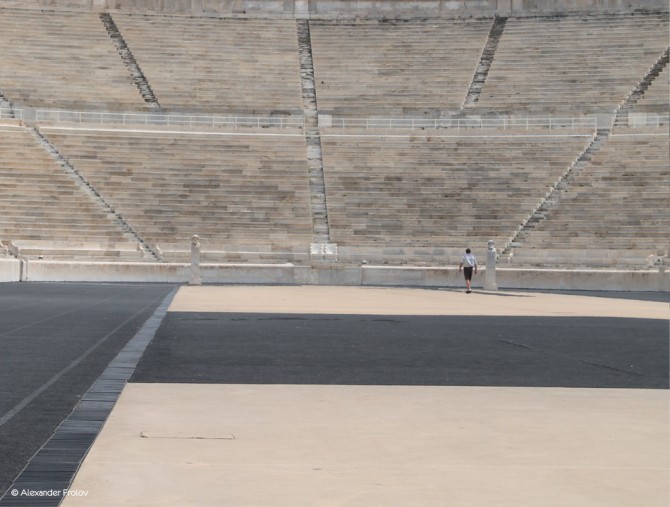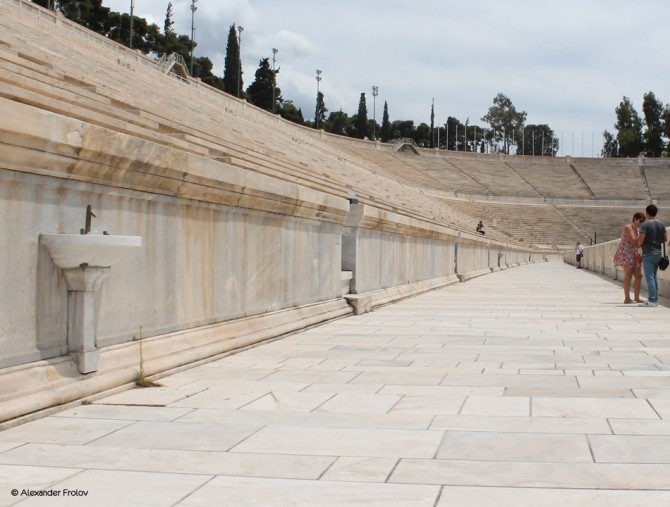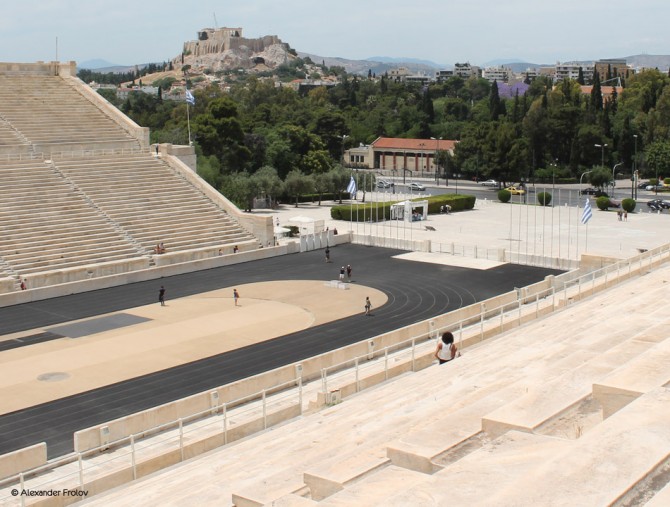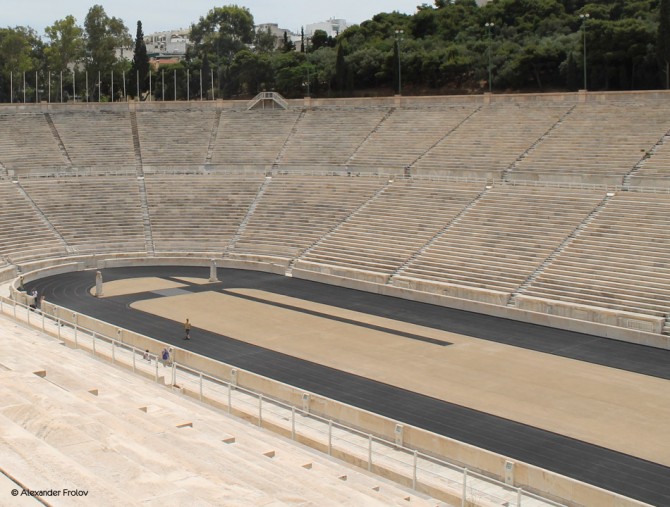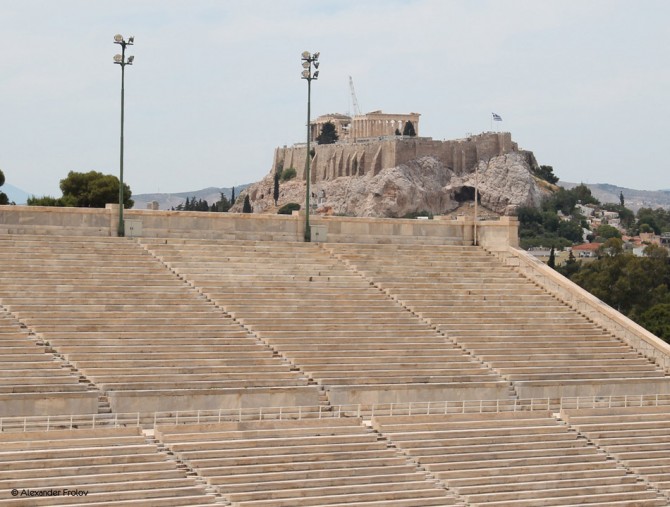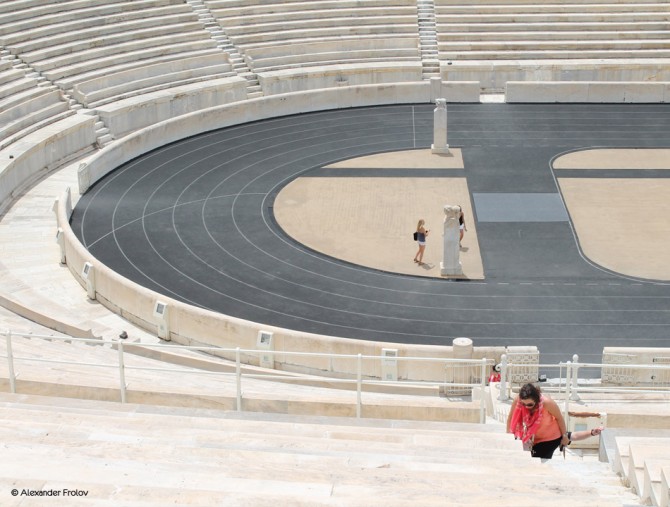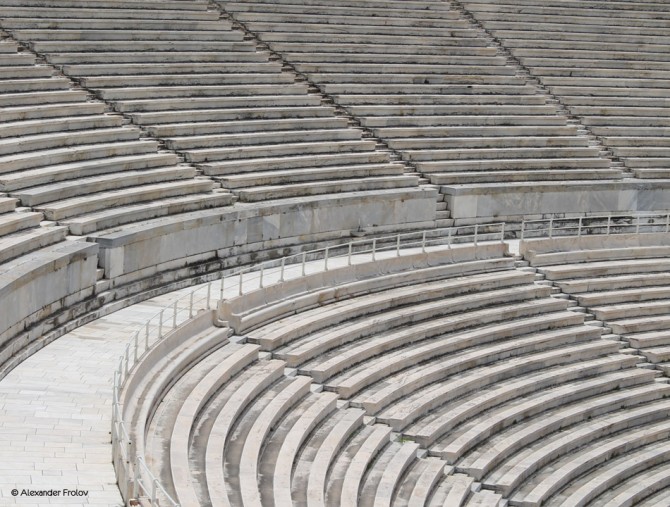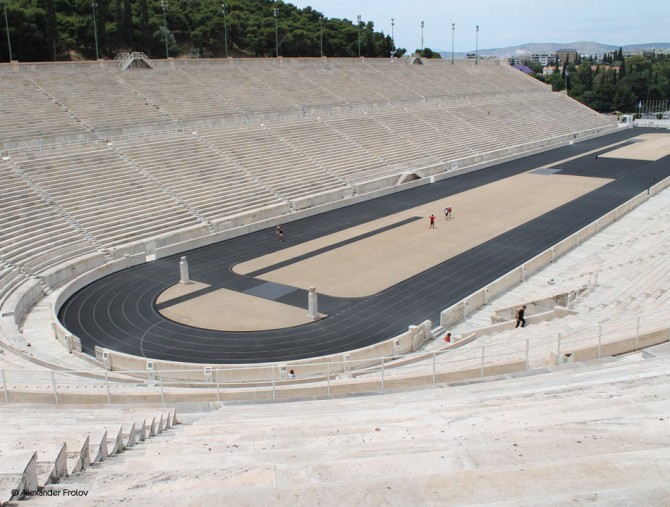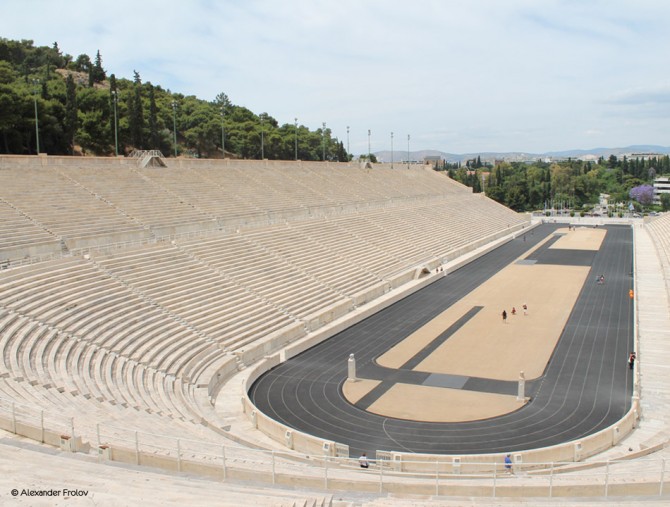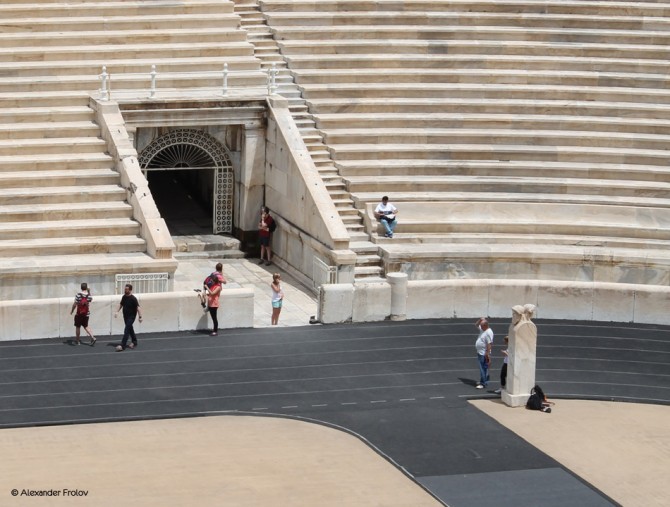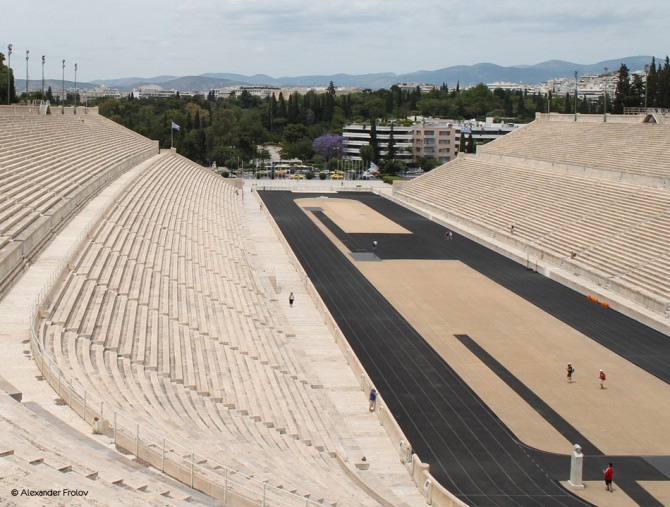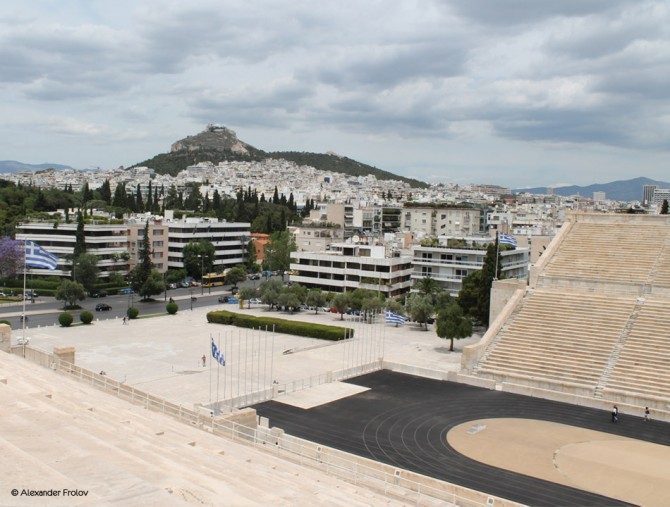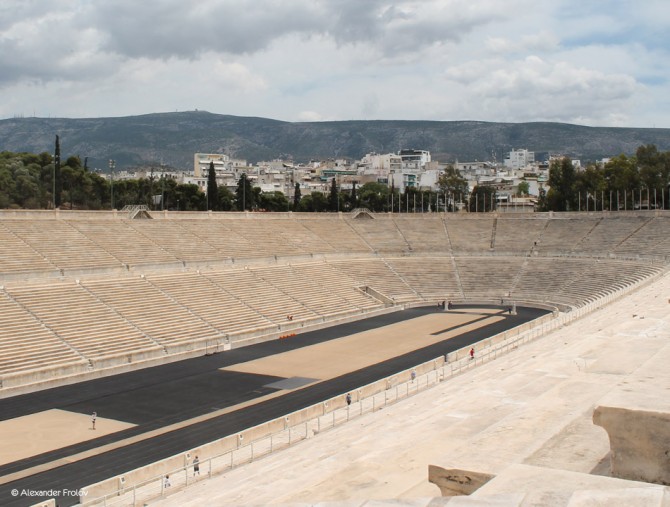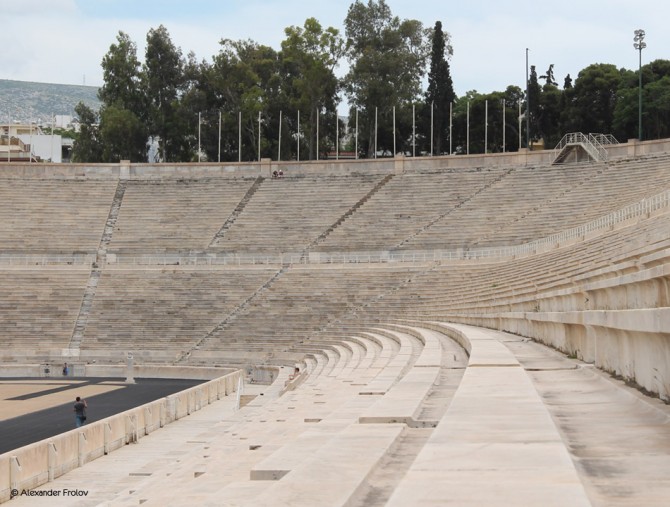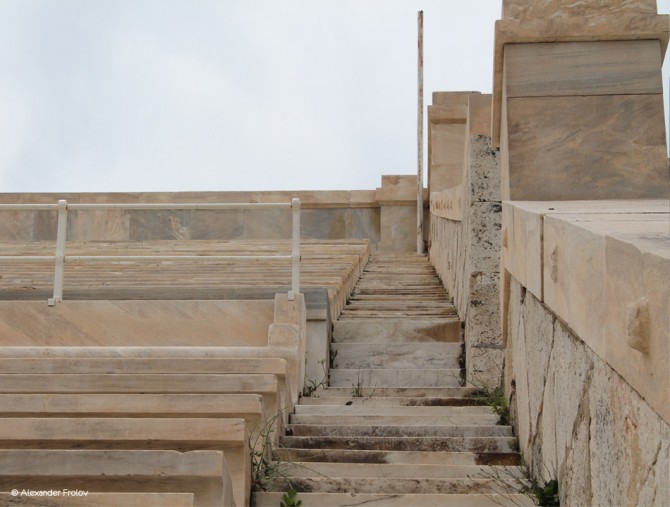Стадион Панатинаикос
Про стадион Панатинаикос как-то нелестно высказался Петр Вайль - “жалкая попытка попытка повторить древность к Олимпиаде 1896 года”. Ну, что тут сказать? Стоит усомниться. Стадион, который также именуется Калимармаро, был на самом деле возведен в 329 году до н.э., а значительное расширение и обновление состоялось в период Герода Аттика в 140 году н.э и тогда он имел 50000 тысяч сидений. Не “Маракана”, но тоже прилично. Остатки той древней постройки были раскопаны и восстановлены в середине XIX века, а второй этап так называемых восстановительных работ был осуществлен в 1895 году, как раз для проведения первых современных Олимпийских игр. Этим объясняется то, что его беговые дорожки не соответствуют современным принятым стандартам. Стадион из 50 горизонтальных мраморных рядов вмещает около 80 000 болельщиков. В 2004 во время проведения летней Олимпиады тут проходили соревнования по стрельбе из лука. Сейчас соревнований здесь не проводится, разве что церемонии передачи олимпийского огня - но это только раз в четыре года. Здесь же находится финиш знаменитого Марафонского забега. Один из немногих способов опробовать Панатинаикос “в деле” - это посетить какой-нибудь концерт местных артистов, но это тоже случается довольно редко. Остается только заплатить 3 евро за вход и лазить по мраморным трибунам пока не надоест, фантазируя о том, как же тут все было раньше. И еще - в Афинах есть другой стадион с таким же названием и проходят там игры одноименного клуба. Не надо их путать.
Как добраться до стадиона Калимармаро (Панаитинаикос):
- на метро, станция Евангелизмос, Василеос Константиу Авеню
Часы работы: 8:00-19:00 с марта по октябрь, 8:00-17:00 с ноября по февраль
Цена билета: 3 евро, 1,5 евро льготный
Фото и текст: Александр Фролов
The Panathenaic Stadium
It is called also Kallimarmaron and it is the unique marble stadium in the world. Today it is known as the stadium that hosted the first Olympic Games in 1896 and it is the place at which the Olympic Flame is delivered in all the Olympics Games, both winter and summer. In the ancient times, the stadium that used to be at this site hosted the athletic portion of the Panathenaic Games, in honor of the Goddess Athena. It was built by order of the orator Lycurgus in 338 BC, in the ravine between the Ardittos hill and the opposite low hill outside the city wall, in the banks of Ilissos river which used to be there. It was remodeled during 139-144 AD, by the sophist and rhetorician Herodes, the Atticus’ son. Since then it had wooden seating, but after its renovation, the seats were covered with Pentelic marble and the original linear form of the stadium changed to the horseshoe shape. Marble slabs demarcated the Remission and the End in the athletic stage, while the entire area was decorated by marble, bronze and even gold statues. On the top of the Ardittos hill they had built the temple of the goddess Tyche (Luck) with her cult statue made of ivory. At the top of the hill, left of the entrance, there was also for many years the tomb of Herodes. The stadium was glorious and the Athenians were really proud of it. With the advent of Christianity, the stadium began to lose its luster and was abandoned over the years. It was the idea of reviving the Olympic Games that gave to the stadium the kiss of life. The exorbitant cost for its reconstruction was mainly taken by the great Greek benefactor Georgios Averof, whose the marble statue, right of the entrance of the stadium, was made by the sculptor George Broutos. The architect Anastasios Metaxas redesigned the stadium, recreating almost entirely the original glorious one. The Olympic Anthem (with lyrics by the great poet Kostis Palamas and music by Spyros Samaras) was heard for the very first time in the Panathenaic Stadium, during the Olympics of 1896. Today the stadium is being used for various purposes, from athletic events till music concerts, and remains an architectural ornament in the heart of Athens.
The Panathenaic Stadium, Vassileos Konstantinou Avenue, Pagrati, Athens. Metro stations Syntagma, Acropolis, Evangelismos. Bus lines: 550, 90, 209, 2, 4, 10, 11. Visiting hours: March to October: 8:00 to 19:00. November to February: 8:00 to 17:00. Ticket prices: (Full) 3 euros, (Reduced) 1,5 euros.
Τext: Marilou Pantazi

